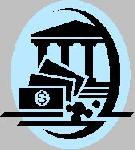
 |
|
| Financial Terms | |
| Term Sheet |
|
Information about financial, finance, business, accounting, payroll, inventory, investment, money, inventory control, stock trading, financial advisor, tax advisor, credit.
Main Page: tax advisor, money, finance, stock trading, inventory, financial advisor, business, financial, |
Definition of Term Sheet
Term SheetA list of the major points of the proposed financing being offered by an investor.
Related Terms:Balance sheetAlso called the statement of financial condition, it is a summary of the assets, liabilities, and Balance sheet exposureSee:accounting exposure. Balance sheet identityTotal Assets = Total Liabilities + Total Stockholders' Equity Coefficient of determinationA measure of the goodness of fit of the relationship between the dependent and Deterministic modelsLiability-matching models that assume that the liability payments and the asset cash DisintermediationWithdrawal of funds from a financial institution in order to invest them directly. Euro-medium term note (Euro-MTN)A non-underwritten Euronote issued directly to the market. Euro-  Financial intermediariesInstitutions that provide the market function of matching borrowers and lenders or Intermarket sectorspread The spread between the interest rate offered in two sectors of the bond market for Intermarket spread swapsAn exchange of one bond for another based on the manager's projection of a Intermediate-termTypically 1-10 years. IntermediationInvestment through a financial institution. Related: disintermediation. Liquidity theory of the term structureA biased expectations theory that asserts that the implied forward Long-termIn accounting information, one year or greater. Long-term assetsValue of property, equipment and other capital assets minus the depreciation. This is an Long-term debtAn obligation having a maturity of more than one year from the date it was issued. Also  Long-term debt/capitalizationIndicator of financial leverage. Shows long-term debt as a proportion of the Long-term debt ratioThe ratio of long-term debt to total capitalization. Long-term financial planFinancial plan covering two or more years of future operations. Long-term liabilitiesAmount owed for leases, bond repayment and other items due after 1 year. Long-term debt to equity ratioA capitalization ratio comparing long-term debt to shareholders' equity. Medium-term noteA corporate debt instrument that is continuously offered to investors over a period of Off-balance-sheet financingFinancing that is not shown as a liability in a company's balance sheet. Other long term liabilitiesValue of leases, future employee benefits, deferred taxes and other obligations Short-term financial planA financial plan that covers the coming fiscal year. Short-term investment servicesServices that assist firms in making short-term investments. Short-term solvency ratiosRatios used to judge the adequacy of liquid assets for meeting short-term Short-term tax exemptsShort-term securities issued by states, municipalities, local housing agencies, and SpreadsheetA computer program that organizes numerical data into rows and columns on a terminal screen, Term bondsOften referred to as bullet-maturity bonds or simply bullet bonds, bonds whose principal is Term Fed FundsFed Funds sold for a period of time longer than overnight. Term life insuranceA contract that provides a death benefit but no cash build-up or investment component. Term loanA bank loan, typically with a floating interest rate, for a specified amount that matures in between Term insuranceProvides a death benefit only, no build-up of cash value. Term repoA repurchase agreement with a term of more than one day. Term to maturityThe time remaining on a bond's life, or the date on which the debt will cease to exist and Term premiumsExcess of the yields to maturity on long-term bonds over those of short-term bonds. Term trustA closed-end fund that has a fixed termination or maturity date. Terminal valueThe value of a bond at maturity, typically its par value, or the value of an asset (or an entire Terms of saleConditions on which a firm proposes to sell its goods services for cash or credit. Terms of tradeThe weighted average of a nation's export prices relative to its import prices. BALANCE SHEETA “snapshot” statement that freezes a company on a particular day, like the last day of the year, and shows the balances in its asset, liability, and stockholders’ equity accounts. It’s governed by the formula: LONG-TERM LIABILITIESBills that are payable in more than one year, such as a mortgage or bonds. Balance SheetA financial statement showing the financial position of a business – its assets, liabilities and Long-term liabilitiesAmounts owing after more than one year. Balance SheetOne of the basic financial statements; it lists the assets, liabilities, and equity accounts of the company. The Balance sheet is prepared using the balances at the end of a specific day. balance sheetA term often used instead of the more formal and correct coefficient of determinationa measure of dispersion that employee time sheeta source document that indicates, for each employee, what jobs were worked on during the day and for what amount of time job order cost sheeta source document that provides virtually predetermined overhead ratean estimated constant charge per unit of activity used to assign overhead cost to production or services of the period; it is calculated by dividing total budgeted annual overhead at a selected level of volume or activity by that selected measure of volume or activity; it is also the standard overhead application rate Term structureThe relationship between the yields on fixed-interest Balance sheetA report that summarizes all assets, liabilities, and equity for a company Long-term debtA debt for which payments will be required for a period of more than balance sheetFinancial statement that shows the value of the common-size balance sheetBalance sheet that presents items as a percentage of total assets. financial intermediaryFirm that raises money from many small investors and provides financing to businesses or other market-value balance sheetFinancial statement that uses the market value of all assets and liabilities. terms of saleCredit, discount, and payment terms offered on a sale. Financial IntermediaryAny institution, such as a bank, that takes deposits from savers and loans them to borrowers. Financial IntermediationThe process whereby financial intermediaries channel funds from lender/savers to borrower/spenders. Intermediate GoodA good used in producing another good. TermSee term to maturity. Term DepositAn interest-earning bank deposit that cannot be withdrawn without penalty until a specific time. Term to MaturityPeriod of time from the present to the redemption date of a bond. Term Structure of Interest RatesRelationship among interest rates on bonds with different terms to maturity. Terms of TradeThe quantity of imports that can be obtained for a unit of exports, measured by the ratio of an export price index to an import price index. Termination PayAdditional pay due to an employee whose employment is Term Life InsuranceA plan of insurance which covers the insured for only a certain period of time and not necessarily for his or her entire life. The policy pays a death benefit only if the insured dies during the term. Yearly Renewable Term InsuranceSometimes, simply called YRT, this is a form of term life insurance that may be renewed annually without evidence of insurability to a stated age. Balance SheetA financial report showing the status of a company's assets, liabilities, and owners' equity on a given date. Credit TermsConditions under which credit is extended by a lender to a borrower. Flexible TermOptional periods of time which the conditions of a contract will be carried out. IntermediaryAn independent third party that may act as a mediator during negotiations. Long Term DebtLiability due in a year or more. Longer-Term Fixed AssetsAssets having a useful life greater than one year but the duration of the 'long term' will vary with the context in which the term is applied. Repayment TermsThe length of time given a borrower by a lender to repay a debt and the frequency of principal payments which the borrower has to meet. TermThis is usually the duration of a loan. Term LoanA secured loan made to business concerns for a specific period (normally three to ten years). It is repaid with interest, usually with periodical payments. termThe period of time during which a financial contract – such as a GIC or a loan – is in force. TermThe time period during which a policy is in force, or the time it takes for a policy to reach maturity. Term LifeA product that provides life coverage for a specified duration typically not beyond the age of 75. Terminal Illness Insurance (Credit Insurance)Coverage that provides a lump-sum payment should you become terminally ill. The payment is made to your creditors to pay off your debt owing. TerminateCease all legal obligations under a contract. CreditorsPurchases of goods or services from suppliers on credit to whom the debt is not yet paid. Or a accounts receivableShort-term, non-interest-bearing debts owed to a book value and book value per shareGenerally speaking, these terms capital investment analysisRefers to various techniques and procedures current assetsCurrent refers to cash and those assets that will be turned fixed assetsAn informal term that refers to the variety of long-term operating Accounts payableAcurrent liability on the balance sheet, representing short-term obligations Accounts receivableA current asset on the balance sheet, representing short-term Current liabilityThis is typically the accounts payable, short-term notes payable, and Property, plant, and equipmentThis item is comprised of all types of fixed assets Related to : financial, finance, business, accounting, payroll, inventory, investment, money, inventory control, stock trading, financial advisor, tax advisor, credit. |